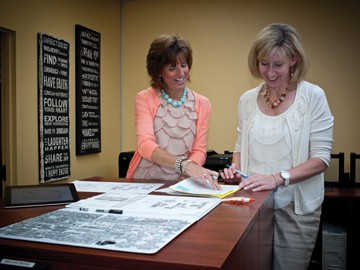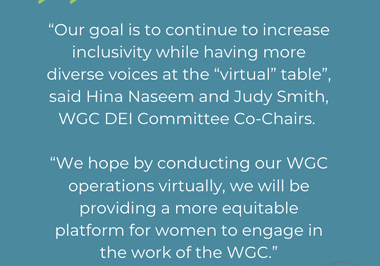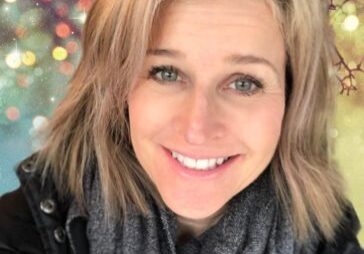MOVING CIRCUMSTANCES
HELPING A PARENT TO DOWNSIZE CAN BE A MONUMENTAL TASK
STORY BY Elizabeth Heubeck
Until a few years ago, Jane Preston’s 85-year-old mother was extremely independent. “She would fly off to France with friends. She was very, very active,” Preston says. But two years ago, while vacationing at the beach, Preston’s mother fell ill. A trip to the emergency room determined the cause as pulmonary fibrosis, a condition that causes scar tissue to build up on the lungs and results in shortness of breath and fatigue. It was a condition she’d been diagnosed with  years earlier, but had failed to tell her family about. Shortly afterward, her eyesight and short-term memory began to fail. A trusted family friend suggested that the three-level house Preston’s mother had lived in for 34 years was no longer a good fit. Initially Preston, an only child who lives and works in Howard County, resisted the idea. But once she concluded it was best for her mother’s safety and well being, she had to convince her mother – and find a place for 34 years’ worth of possessions. Helping aging parents downsize is one of the most monumental personal challenges confronting women and men of the “sandwich generation” — those who find themselves supporting aging parents while still in the throes of raising their own children. Many times, older parents are reluctant or downright opposed to moving, even as a decline in their physical or mental health makes such a move imperative. Even when older adults are in good health, a home that was practical while they were raising a family — one with several bedrooms, multiple levels and a large yard — becomes impractical later in life.
years earlier, but had failed to tell her family about. Shortly afterward, her eyesight and short-term memory began to fail. A trusted family friend suggested that the three-level house Preston’s mother had lived in for 34 years was no longer a good fit. Initially Preston, an only child who lives and works in Howard County, resisted the idea. But once she concluded it was best for her mother’s safety and well being, she had to convince her mother – and find a place for 34 years’ worth of possessions. Helping aging parents downsize is one of the most monumental personal challenges confronting women and men of the “sandwich generation” — those who find themselves supporting aging parents while still in the throes of raising their own children. Many times, older parents are reluctant or downright opposed to moving, even as a decline in their physical or mental health makes such a move imperative. Even when older adults are in good health, a home that was practical while they were raising a family — one with several bedrooms, multiple levels and a large yard — becomes impractical later in life.
Regardless of the circumstances, every step in the process of downsizing – from getting older parents to agree to a move to deciding how to deal with a lifetime of accumulated possessions – can be fraught with headaches for their children. But there is help.
As the aging adult population expands — by 2030, 25 percent of Maryland’s population will be over 60, up from 15 percent today — so, too, does the number of professionals focused on helping aging adults and their families with life transitions, including downsizing.
Help with an otherwise overwhelming act.
When Jane Preston set out to help her mother move from the family home in Bethesda, she called upon a Fulton-based company called Let’s Move, LLC, referred to her by the assisted living facility where her mother was moving. The firm, started by Kim McMahon and Allison Pihl, is one of an increasing number of businesses designed to help aging adults downsize. There’s even a professional organization for those involved in the task, the National Association of Senior Move Managers. McMahon is president of the association’s board of directors.
“Downsizing is an extremely difficult process to go through,” observes McMahon. For many seniors, it’s tantamount, she says, to “releasing their history.” Sometimes, the pieces of the past that older adults want to release aren’t things their children necessarily want. Silver, for example. “(Parents) want their kids to have it, the kids don’t want it,” McMahon says. Her company helps lend objectivity to the process that helps, she says, “to strip out some of the emotion.”
Let’s Move manages as much or as little of the move as a family wants. They will organize initial sorting and packing, calling in consigners and even book collectors to comb through unwanted collections. They will sketch a floor plan of the new home to determine exactly which possessions will fit. They will even unpack and arrange possessions after the move.
“We make up their bed, set up their kitchen. This way, all the boxes and papers are removed when they come into the home,” easing the stress of the move and enabling clients to feel at home when they arrive, McMahon says.
Jane Preston considered the service a godsend when she moved her mother to an area assisted living facility. “They unpacked everything. They hung towels; knickknacks were set out and books put on the shelves,” Preston recalls. “When my mother walked in, she said it felt like home.”
Resisting change
The seamless move Preston describes doesn’t always happen. Many older adults — especially, it seems, those with cognitive impairments — resist downsizing, particularly to assisted living facilities. Susan Bryant, a single professional mother with two young children at home, agreed to have her father — a widower with early stage Parkinson’s Disease — move into her home as long as she could manage his care.
The arrangement soon became overwhelming. Bryant’s father needed a lot of support managing his medications. His anxiety grew to the point where he’d wake up his daughter in the middle of the night to ask if he’d taken his medicine. But when Bryant broached the subject of an assisted living facility with her father, he wanted nothing to do with it. “He would say, ‘I’ll do better. I’ll try harder’,” she recalls.
Bryant’s father is by no means unique. Many aging adults react with extreme resistance to the mere suggestion of a move to assisted living, typically because they equate it with a loss of independence.
“Sometimes the kids know what needs to happen, but the parents don’t want to hear it,” says Louise Phipps Senft, Esq., founder of the Baltimore Mediation Center. Then there are times when the kids can’t agree on what should happen with their parents if the parents aren’t in a position of making the decisions. In either situation, a mediator can come in handy. “I create a place for them to explore questions, possibilities,” Senft says. “The decision is sometimes about how to engage or even raise the issue (of downsizing) with their parents.” These decisions can be just as challenging as what to do with the stuff, says Senft.
Although Bryant did not seek intervention from a mediator, she did rely on the input of her brother and a close friend of her father’s to persuade him to move to a local multi-step assisted living facility. Eventually, he agreed, albeit reluctantly.
While Bryant struggled to get her father to move to an assisted living facility, the actual move was far less painful. “He didn’t seem particularly attached to his things at that time,” she recalled. “My dad didn’t care one way or another.”
Bryant suggested a few possible reasons for her father’s neutrality regarding the dissemination of his personal items. As a widower, he already had gone through the process of weeding out personal items when he moved from the house he shared with his wife to an apartment, so this time around it wasn’t as challenging. Or, she thought, maybe he was just too emotionally spent by the idea of losing his independence to concern himself with the whereabouts of his possessions.
Whatever the reason, her father’s nonchalance over the whereabouts of his possessions came as a relief for Bryant. Between dividing some possessions among siblings, having a yard sale and calling Goodwill, she took care of that aspect of her father’s move hassle free. What’s more, Bryant noted that Inspirational Movers, the moving company referred to her by the assisted living facility, made the actual transition incredibly easy. “They were super affordable and very conscientious,” she notes.
Though the move itself went smoothly, Bryant says her father never fully adjusted to his new living situation. “My dad had a very active lifestyle prior to his diagnosis of Parkinson’s. He was planning to play golf in Florida,” she says.
Knowing when it’s time
Deciding when to downsize isn’t always easy. Aging adults are often intensely stubborn about moving. Just ask Michelle Burchick, a nurse who, along with social worker Vicky Hulcher, owns Howard County-based Compassionate Care for Seniors, LLC. The geriatric care managers provide many services to area aging adults, including helping families decide when it’s time to downsize.
To offer informed input, Burchick and Hulcher conduct a number of assessments. They measure their clients’ cognition and mobility; they also assess their living space. “We do an assessment of the home to see if it’s safe. If it’s cluttered and has three floors with the bathroom on the third floor,” Burdick explains, it may not be the best environment for a senior.
Although these health professionals’ assessments provide objective measurements of cognition, mobility and safety, they don’t always prove convincing to their clients. “I think everybody wants to stay in their home until the very end. In 30 years of practice, only one older adult we’ve worked with has volunteered to move,” Burchick says.
So Burchick and Hulcher tread lightly. “It never works to go in to a client’s home the first day and tell them they need to move. We try to build some trust first,” Burchick says.
Admitting that they’re not the strong, independent adults they once were isn’t the only hurdle that prevents older folks from downsizing to a smaller home or assisted living facility. Spending the money to make the move can also require convincing.
In certain situations, explains Burchick, downsizing makes financial sense. For instance, if a home health aid or caretaker needs to be at a person’s home for more than a few hours a day, it’s usually more cost-effective to move into an assisted living facility. For families whose finances are ultimately driving the decision-making process, this explanation can be persuasive.
“Even as an adult, you never stop being a child” when it comes to interactions with your parents, Burchick says. “To have somebody else come in and smooth out the way, the child can be the child again and we can be the bad guy.




